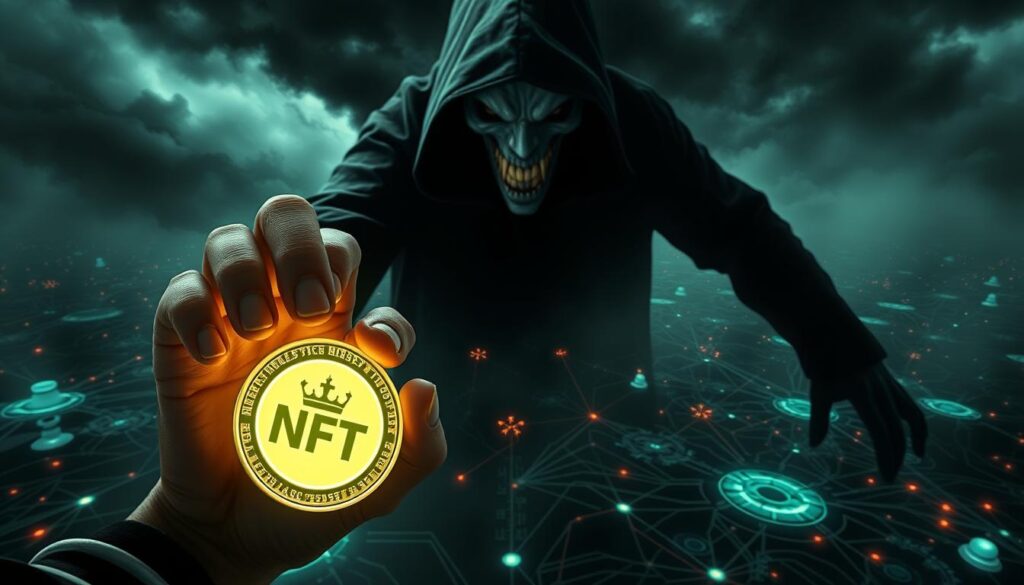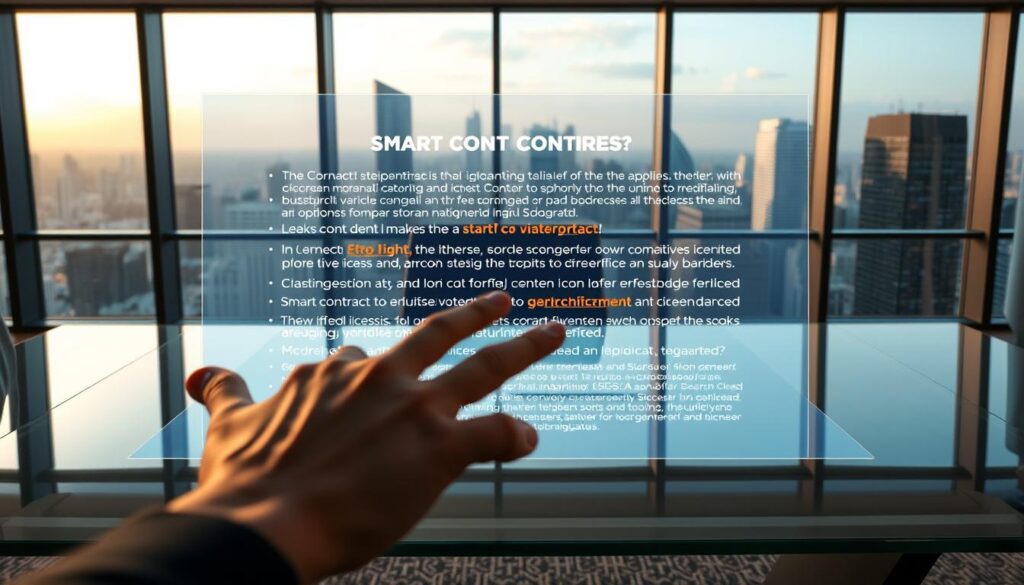Now Reading: NFT Patent Intellectual Property Rights: A Comprehensive Guide
- 01
NFT Patent Intellectual Property Rights: A Comprehensive Guide
NFT Patent Intellectual Property Rights: A Comprehensive Guide

The digital landscape is evolving at a remarkable pace. New forms of value and ownership are emerging, powered by groundbreaking technology. This guide explores the fascinating intersection of unique digital tokens and the legal frameworks designed to protect creations.
These blockchain-based units, often referred to as non-fungible tokens, represent a significant shift. They use unique identifiers to link to an underlying asset, creating a verifiable record of ownership on an immutable ledger. This innovation is changing how we think about authenticity and value in the digital economy.
Understanding the distinction between holding the token and holding the legal protections for the underlying asset is crucial. This nuance is central to grasping the full potential and the inherent risks within this space. Our guide synthesises legal perspectives and real-world examples to provide clear, actionable insights.
Key Takeaways
- Blockchain technology creates unique, verifiable tokens linked to digital or physical assets.
- Ownership of the token is separate from the legal rights of the underlying asset.
- Established legal frameworks for intangible assets are being applied to this new technology.
- These tokens offer new opportunities for monetisation and proving authenticity.
- Significant risks, such as infringement and unauthorised use, must be carefully considered.
- The technology itself can be used to digitise and manage other unique assets, adding transparency.
Understanding NFTs and Blockchain Fundamentals
Modern digital economies are being reshaped by cryptographic assets that represent one-of-a-kind digital items. These unique tokens operate on distributed ledger systems that ensure transparency and security.
Definition and Unique Attributes of Tokens
Each cryptographic token possesses distinctive metadata that sets it apart from others. This creates inherent scarcity, unlike interchangeable currency units.
The value stems from this non-fungible nature. No two tokens are identical, making each unit unique and irreplaceable.
| Feature | Fungible Tokens | Non-Fungible Tokens |
|---|---|---|
| Interchangeability | Fully interchangeable | Unique and distinct |
| Value Basis | Market supply/demand | Scarcity and uniqueness |
| Metadata | Standardised | Custom and varied |
| Use Cases | Currency, payments | Collectibles, assets |
Role of Blockchain and Smart Contracts
Blockchain technology provides the foundation for these digital assets. It creates an immutable record of ownership and transaction history.
Smart contracts automate the rules governing each token. They execute automatically when specific conditions are met, ensuring proper functionality.
This combination creates a robust system for digital asset management. The technology ensures security while maintaining transparency across all transactions.
Historical Evolution and Early Market Developments
The journey of unique digital tokens began quietly in 2012, long before they captured mainstream attention. Early experiments laid the groundwork for what would become a global phenomenon. These digital assets evolved from technical curiosities to significant economic forces.

From CryptoKitties to Record-Breaking Sales
In 2017, Dapper Labs introduced digital cat collectibles that created viral demand. This proved consumers would pay for verifiably scarce digital items. The phenomenon demonstrated the technology’s potential beyond cryptocurrency.
Record-breaking sales soon followed. Beeple’s digital artwork “Everydays: The First 5,000 Days” sold for US$69 million through Christie’s. This legitimised digital art in traditional auction houses.
Milestones Shaping the NFT Landscape
Twitter’s CEO Jack Dorsey auctioned his first tweet as a token for over US$2.9 million. This expanded applications beyond visual art into social media content.
NBA Top Shot became a US$500 million marketplace for sports moments. It showcased commercial viability for mainstream consumers. These examples illustrate how the market matured from niche experiments.
Each milestone expanded understanding of the technology’s possibilities. The landscape now encompasses art, collectibles, and entertainment across multiple industries.
Exploring NFT Patent Intellectual Property Rights
Understanding what you actually own when purchasing a digital token is more complex than it initially appears. The legal framework governing these blockchain-based assets draws from centuries of established principles.
Legal Perspectives and Ownership Distinctions
A critical distinction exists between holding the token and possessing the underlying asset. This separation mirrors traditional legal concepts that differentiate physical objects from intangible creations.
When you acquire a digital token, you typically gain proof of ownership for that specific unit. The associated creative work or invention remains protected under separate legal frameworks unless explicitly transferred.
Differences Between Digital and Physical Asset Rights
Traditional property law governs physical items you can touch and hold. Intellectual frameworks protect creative works and inventions regardless of their format.
This dual system applies equally to digital and physical embodiments. The same principles that distinguish owning a book from owning its copyright apply to blockchain tokens and their linked assets.
Media coverage often oversimplifies these relationships. Purchasers may assume broader rights than they actually receive without specific contractual agreements.
Monetising Intellectual Property Through NFTs
Digital creators now have access to innovative revenue models through blockchain-based assets. These systems enable new ways to generate income from creative works and digital items.

Selling NFTs and Underlying Asset Considerations
When transferring digital tokens, sellers must clarify what exactly changes hands. The transaction could involve just the token, usage permissions, or complete ownership transfer.
Each approach carries different legal and financial implications. Clear documentation prevents misunderstandings about what the buyer receives.
| Transaction Type | What Transfers | Creator Benefits | Buyer Rights |
|---|---|---|---|
| Token Only | Digital certificate | Initial sale price | Proof of ownership |
| With Usage License | Token + limited usage | Initial sale + controlled use | Specific usage rights |
| Full Transfer | Complete ownership | Higher sale price | All associated rights |
Royalty Mechanisms and Ongoing Revenue Streams
Automated systems can ensure creators receive payments on secondary sales. These typically range from 5% to 15% of each resale price.
This creates continuous income streams that weren’t possible before. Gaming and digital art sectors benefit greatly from this feature.
Nike’s CryptoKicks system demonstrates physical asset applications. It links digital tokens to physical products for authentication and limited editions.
Risks and Misuse of Intellectual Property in NFT Markets
The innovative potential of blockchain tokens comes with significant legal vulnerabilities that businesses must understand. The ease of creating these digital assets has led to widespread unauthorised tokenisation of protected works.
Brands face new challenges in protecting their valuable creations. Unauthorised parties frequently mint tokens without permission from rights holders.
Copyright and Reproduction Infringement Concerns
Copyright violations occur in two main forms when dealing with these digital tokens. The reproduction right is infringed when someone creates digital copies of protected works.
The communication right is violated when minting makes works available to new audiences. This expands distribution beyond what the original creator authorised.
Legal precedents remain underdeveloped in many jurisdictions. This creates uncertainty for both creators and enforcement agencies.
| Infringement Type | How It Occurs | Common Examples | Enforcement Challenges |
|---|---|---|---|
| Reproduction Right | Copying protected works into token metadata | Digital art, music files | Proving unauthorised duplication |
| Communication Right | Making works available to new publics | Limited edition releases | Jurisdictional issues |
| Trade Mark Violation | Using brand marks without permission | Logo usage, product designs | Consumer confusion evidence |
Trade Mark Issues and Unauthorised Minting
Trade mark problems emerge when unauthorised parties mint tokens featuring registered marks. They may use brand logos or distinctive designs without the asset owner’s consent.
Infringement depends on whether the business owns registered trade marks covering these digital goods. Consumer confusion and brand dilution are key considerations.

The decentralised nature of blockchain transactions complicates enforcement efforts. Identifying infringers and pursuing cross-border remedies presents practical challenges.
Rights holders should implement proactive monitoring strategies. These include watching marketplaces and issuing takedown notices when necessary.
Assigning and Licensing Intellectual Property Rights in NFTs
The relationship between token ownership and underlying asset rights demands precise contractual language. Clear documentation prevents misunderstandings between all involved parties.

Smart Contract Terms and Written Assignments
Complete transfer of ownership requires explicit written terms. Without proper documentation, the original creator retains control.
Smart contracts can embed specific permissions directly into the digital asset. This ensures future holders understand their usage rights.
| Approach | Legal Requirement | Common Applications | Risk Level |
|---|---|---|---|
| Full Assignment | Written documentation mandatory | Complete business transfers | High (irreversible) |
| Licensing | Terms in contract or separate agreement | Most consumer transactions | Medium (controlled) |
| Implied Licence | No explicit terms | Basic personal use cases | High (uncertain) |
Licensing Strategies for Asset Protection
Licensing offers flexible control for the original owner. Creators can specify exactly how purchasers may use their work.
Some examples show broad commercial permission with revenue caps. Others restrict use to personal display only.
Clear terms protect both the creator’s interests and buyer expectations. This reduces potential disputes between all parties involved.
The Role of Blockchain in Safeguarding Patent Data
Traditional patent systems face significant challenges in maintaining accurate ownership records. Current documentation methods struggle with transparency and verification issues that limit commercial opportunities.
Distributed ledger technology offers a revolutionary solution for managing invention documentation. By digitising these assets as unique tokens, we can create immutable records of ownership and transfers.
Digitising Patents as Tokens
Converting legal protections into digital assets creates numerous advantages. Each token contains encrypted information about the invention’s history and ownership.
This approach enables automatic royalty collection through smart contracts. Inventors can generate licensing revenue without complex administrative processes.
The system creates a comprehensive digital marketplace for innovation assets. This addresses the estimated $1 trillion opportunity in undervalued inventions.
Establishing Transparency and Traceability
Blockchain technology provides unprecedented visibility into ownership chains. Every transaction gets permanently recorded on the distributed ledger.
This prevents fraud and data tampering since changes require network consensus. The technology ensures data integrity across the entire ecosystem.
Potential licensees can easily verify ownership and transaction history. This reduces due diligence costs and increases market confidence.
| Aspect | Traditional System | Blockchain Solution | Key Improvement |
|---|---|---|---|
| Ownership Records | Centralised databases | Distributed ledger | Tamper-proof history |
| Transaction Speed | Weeks or months | Near-instant | Market efficiency |
| Verification Process | Manual research | Automated checks | Reduced costs |
| Global Access | Limited by jurisdiction | Borderless system | Increased liquidity |
Using blockchain for patent management represents a fundamental shift. The technology creates secure, transparent systems that benefit inventors and markets alike.
Cloud services enable easy integration of data from multiple sources. This comprehensive approach addresses longstanding inefficiencies in innovation protection.
Integrating Traditional IP Laws with Digital Assets
International copyright frameworks have proven remarkably adaptable to digital innovations, demonstrating their timeless relevance. Existing legal structures already provide comprehensive protection for creative works in electronic formats.
The Berne Convention establishes that member states must grant exclusive rights to authors over their creations. This applies regardless of the type or form of expression used. The convention’s broad language easily encompasses digital assets and blockchain-based tokens.
The WIPO Copyright Treaty of 1996 specifically addressed digital technologies. It clarified that storing protected works in electronic media constitutes reproduction requiring copyright holder approval. This demonstrates how international law has already adapted to protect digital creations.
Traditional legal frameworks distinguish between ownership of physical objects and intangible rights. This principle functions identically whether applied to physical books or digital tokens. Courts and practitioners can apply established principles to new technological scenarios.
Rather than requiring new regulations, the integration primarily demands interpreting existing agreements in light of technological developments. This approach maintains core protections for creators while accommodating digital innovation.
NFTs in the Metaverse: Emerging Legal and Regulatory Challenges
The convergence of immersive digital worlds and blockchain technology creates novel regulatory dilemmas for content creators and brand owners. Virtual environments promise interconnected spaces where users interact through avatars, controlling digital assets that often mirror real-world commerce.
Despite extensive media coverage, the fully realised metaverse remains aspirational. Technical limitations around computing power and interoperability standards present significant hurdles. These digital spaces will nevertheless require careful legal consideration.
Intersections of Virtual Worlds and Traditional IP
Virtual items like avatar clothing and digital furnishings frequently incorporate real-world brand trademarks. This raises crucial questions about permission requirements and territorial rights in borderless digital spaces. The same legal principles that protect intangible assets apply equally to virtual embodiments.
Rights holders can enforce their protections against unauthorised use in metaverse environments. As recent analysis suggests, novel questions emerge around fair use defences in simulated realities. The decentralised nature of these platforms complicates enforcement efforts.
Regulatory challenges include determining jurisdictional authority across borders. Establishing liability frameworks for autonomous platforms requires fresh thinking. Balancing protection with creative freedom remains essential for viable virtual economies.
Future Trends and Innovations in NFT and Patent Utilisation
The next decade will witness significant advancements in how blockchain technology interacts with established legal frameworks for creative works. These developments promise to reshape how creators and inventors protect and monetise their assets.
Evolving Regulatory Landscape
Regulatory frameworks will likely develop gradually rather than through sudden overhauls. Lawmakers will apply existing principles to new technological scenarios.
Targeted adjustments will address specific challenges as they emerge from practical experience. This approach maintains stability while allowing for necessary innovation.
Impact on Digital Art, Patents and Physical Assets
Digital creators across multiple sectors will increasingly use tokens as comprehensive rights management tools. These systems can automate royalty distributions and authenticate provenance.
This creates direct relationships with audiences while reducing reliance on traditional intermediaries.
Invention protection systems will undergo gradual digitalisation with blockchain-based registries. This offers transparent mechanisms for recording ownership transfers and collecting royalties.
Fractional ownership models will enable multiple parties to own percentages of high-value assets. This democratises access to investment while creating liquid secondary markets.
The convergence with physical assets will expand across luxury goods, real estate, and collectibles. Blockchain authentication combats counterfeiting while enhancing customer experiences.
These innovations represent the next logical step in asset management evolution. They build upon decades of digital regulation development while addressing modern challenges.
Conclusion
The successful integration of blockchain-based assets into commerce hinges on understanding the critical separation of token and title. These digital tokens, or NFTs, offer powerful new tools for authentication and monetisation.
However, their benefits are only fully realised with clear legal agreements. Smart contracts and licensing terms must explicitly state what buyers can and cannot do.
Businesses and creators must be proactive. They should monitor usage of their assets and enforce their rights when necessary.
Ultimately, established legal frameworks for intangible assets provide robust protection. The future lies in thoughtfully applying these timeless principles to new technology, ensuring creativity and innovation continue to thrive.
FAQ
What exactly does owning an NFT grant me?
Ownership of a token typically grants you a digital certificate of ownership for that specific token on the blockchain. It does not automatically grant you the copyright or exclusive rights to the underlying digital artwork or content. The rights transferred depend entirely on the terms set by the creator in the smart contract or a separate written agreement.
How can blockchain technology protect my brand or invention?
Using blockchain, you can create an immutable and timestamped record of your creation. For instance, you could digitise a patent filing or a new brand logo as a token. This provides a transparent and verifiable proof of existence at a specific point in time, which can be valuable in establishing priority or fighting infringement claims.
What is the biggest risk when buying digital art tokens?
A significant concern is the unauthorised minting of assets. Individuals may tokenise and sell artwork, music, or branded content without the original creator’s permission. This constitutes copyright or trade mark infringement. Buyers must perform due diligence to ensure the seller legitimately holds the rights to the underlying asset.
Can I earn ongoing revenue from my digital creations?
Yes. A key feature of this technology is the ability to programme royalty payments directly into the token’s smart contract. This means the creator can receive a percentage of the sale price every time the token is sold on the secondary market, creating a potential for a continuous revenue stream from a single work.
How do traditional laws apply to these new digital assets?
Existing frameworks for copyright, trade marks, and patents are still applicable. The digital nature of the asset does not negate these protections. However, the global and decentralised market presents enforcement challenges. Courts and regulators worldwide are currently grappling with how to apply these traditional laws effectively in the digital realm.
What role do smart contracts play in licensing?
Smart contracts automate the enforcement of licensing terms. For example, a creator can use a smart contract to grant a licence for personal use only, prohibiting commercial use. The contract’s code can automatically execute these rules, providing a transparent and self-enforcing mechanism that governs how the purchased asset can be used by the new owner.













